Our view at Stack - Pipedrive is a robust CRM platform, offering automation, contact data collection, webhooks, AI-powered sales assistant, email communications, email marketing, and customisable sales pipeline workflows.
CRM and marketing automation software each have their own strengths. However, using them separately can sometimes result in fragmented data and less efficient workflows.
In this article, you’ll learn about the benefits of integrating the two software types. We’ll also walk through four simple steps to make the process as frictionless as possible.
Marketing automation vs. CRM: the key differences
Customer relationship management (CRM) software manages customer data and helps build relationships. Marketing automation software automates repetitive, time-consuming marketing tasks.
Both tools help drive revenue growth. However, they have different uses within the customer journey that help achieve that growth.
For example, marketing teams often use automation tools in the early to mid-stage when potential customers learn about a brand. These tools help generate leads and move them toward becoming customers.
Sales teams use CRM systems later in the customer journey to nurture leads, close sales and maintain relationships to encourage repeat business.
Here are seven key differences between marketing automation and CRM software:
| Marketing automation software | CRM software |
| Primary functions help you automate campaigns and marketing tasks | Primary functions help you manage customer interactions to get more deals over the line |
| Typically used by marketing teams | Typically used by sales teams |
| Helps you streamline marketing efforts to increase engagement and drive more qualified leads | Helps you build customer relationships that enhance customer satisfaction and loyalty |
| Key features include lead nurturing, newsletter automation and social media management | Key features include contact management, sales pipeline management and lead tracking |
| Workflow automations help you schedule posts and send email campaigns | Workflow automations help you score leads and track deals |
| Reports measure marketing campaign effectiveness and lead conversion rates | Reports measure sales rep performance and pipeline status |
|
Can use artificial intelligence to personalize communications and optimize campaign timing |
Can use artificial intelligence to predict customer behavior and recommend the next best actions |
Despite their differences, both tools can co-exist to help you build, manage and nurture customer relationships throughout the journey.
Recommended reading
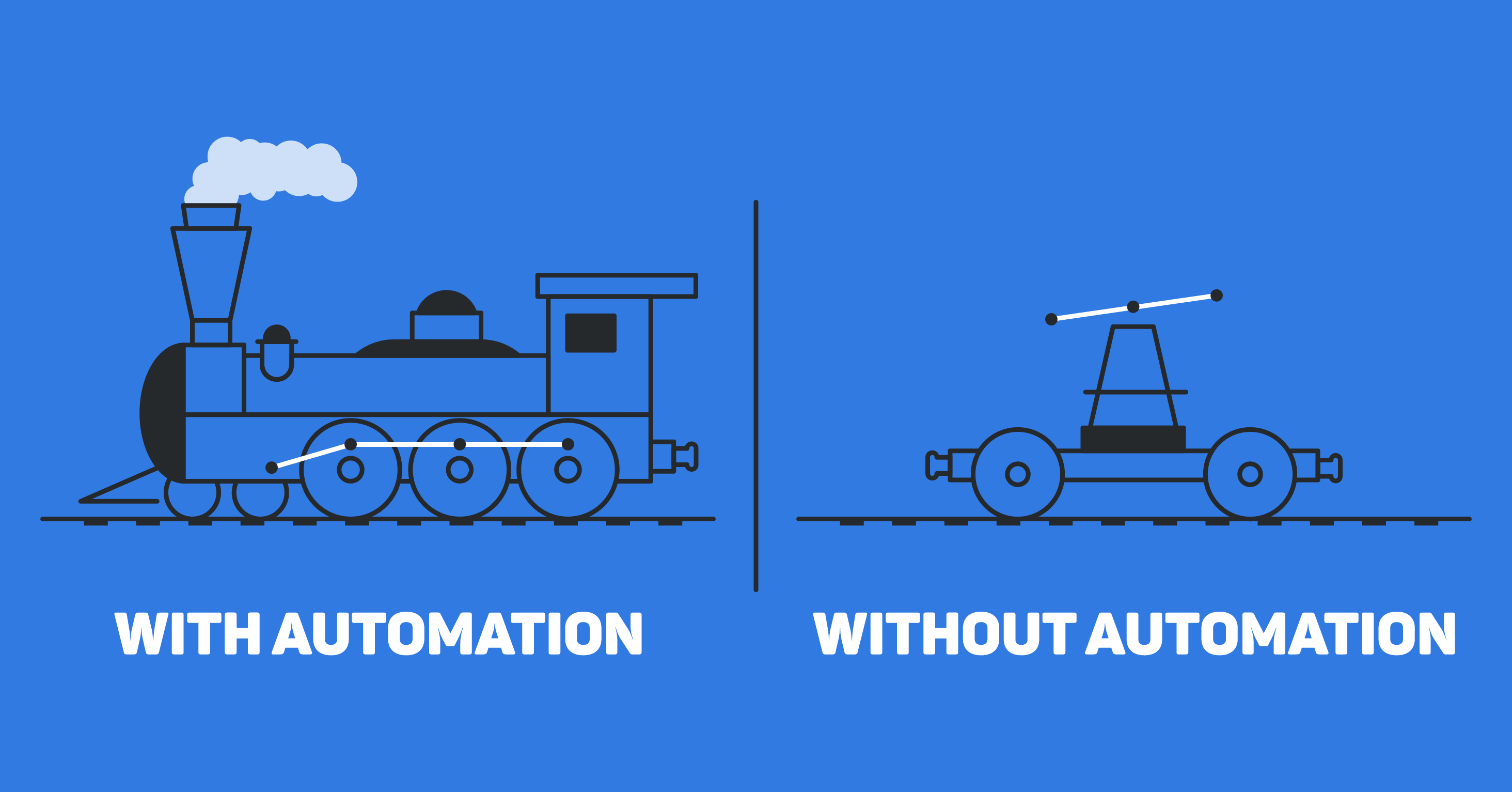
Which sales tasks should you automate?
5 benefits of integrating your CRM and marketing automation platforms
Handling CRM and marketing automation in one place can free up your teams’ time to focus on high-priority activities that turn leads into customers.
According to McKinsey, non-selling activities consume two-thirds of the average sales team’s time. However, automation can free up about 20% of their capacity.
Here are five more benefits of marketing automation and CRM software integrations.
1. Unified customer profiles to spot patterns and trends
An all-in-one CRM and marketing automation solution lets you keep everything you know about customers in one place.
Combining all sales and marketing customer data makes it easier to spot patterns and trends. For example, you might notice that customers who engage with your email newsletters tend to make repeat purchases within three months.
Using that information, you can decide to reward frequent readers with points, discounts and exclusive content to entice them to buy even more regularly.
According to Adobe research, prioritizing your customer experience (CX) like this can help you outperform others on key metrics like referral rate, customer acquisition and repeat business.
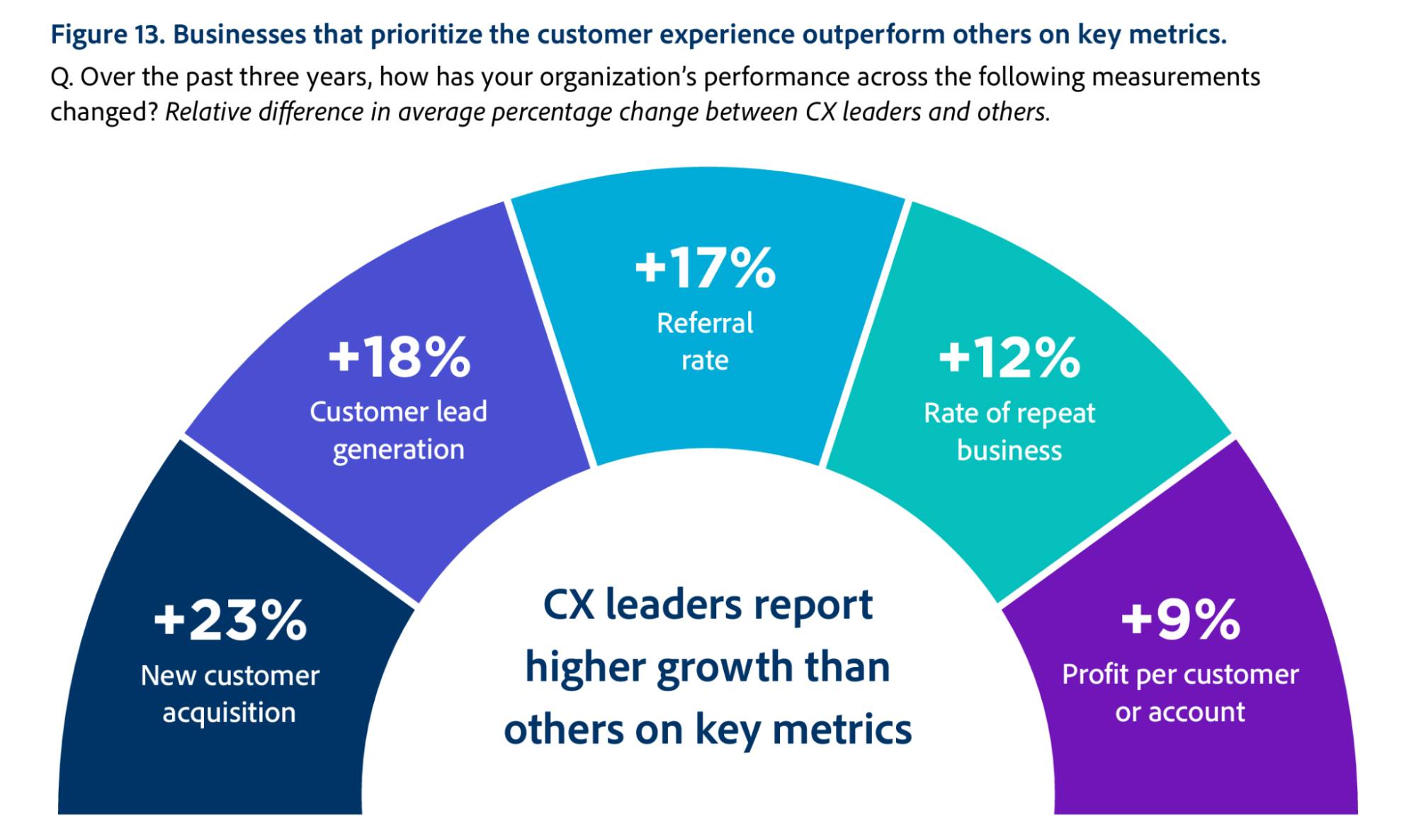
The happier you make customers while engaging with them, the more likely they are to keep buying from you.
2. Automated lead qualification, scoring and nurturing to keep your sales funnel moving
You can use a CRM and marketing automation system to assess each lead’s potential using predefined criteria (e.g., location, income or shopping habits) and engage them with personalized interactions over time.
For example, you can use CRM features to automatically qualify leads (based on CRM data like demographics or behavior) and prioritize them with a numerical value (lead scoring).
After that, you can use marketing automations to trigger follow-up campaigns with your most qualified leads to convince those people to take the next step on their journey.
Here’s what that automation looks like in Pipedrive.
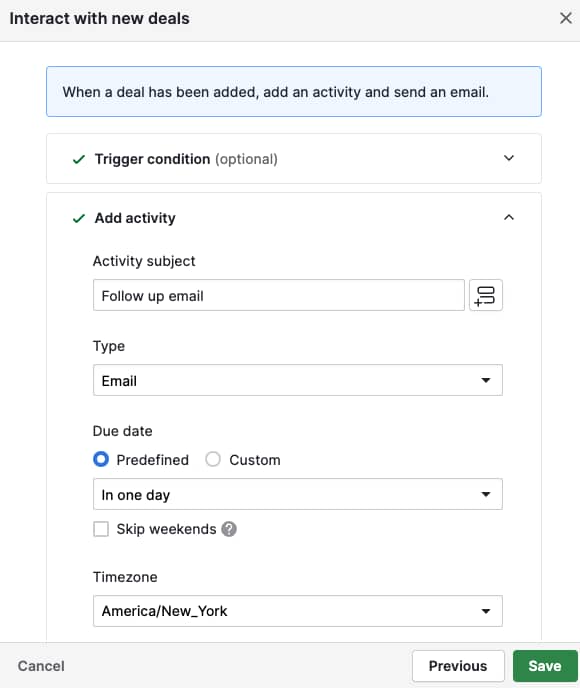
Automating your lead qualification and scoring processes within your CRM ensures that salespeople only receive high-quality leads.
Marketing automations ensure that prospects who aren’t ready to buy are still engaged with and guided through the sales funnel until they are.
3. Seamless data sync for more accurate decision-making
Keeping both CRM and marketing automation platforms updated on one system makes you more likely to have consistent data. Taking that, you can create more accurate reports and make better decisions.
A unified approach like this helps eliminate data silos so you can track and analyze interactions across all touchpoints with confidence.
According to our State of Sales and Marketing 2023/2024 report, 81% of respondents already use CRM software with automation capabilities.
Which automation tools and technology do you use?
92% of respondents use at least one automation tool in their role.
What this means is many of your competitors could already be using an integrated system. To compete, you must have your own unified view of customer interactions and campaign performance.
4. Provide in-demand, personalized experiences more easily
Real-time CRM insights can give you a more detailed overview of each customer. Using this knowledge, you can better tailor sales and marketing messages.
Let’s say your CRM pinpoints a customer who keeps opening emails and interacting with blogs about your new accounting software feature. You could use these events to trigger a personalized email with a discount to increase their chances of upgrading their plan.
Increasing the relevance of campaigns like this can drive more sales. According to Twilio research, over half of consumers say they’ll repeatedly buy from brands after a personalized experience.
These CXs are also becoming increasingly important to customers – seeing a 7% increase year-over-year.
Over half (56%) of consumers say they will become repeat buyers after a personalized experience, a 7% increase year-over-year.
While marketing automation drives these targeted campaigns, you can manage the resulting communications and relationship-building efforts directly within your CRM.
Download Your Sales and Marketing Strategy Guide
Grow your business with our step-by-step guide (and template) for a combined sales and marketing strategy.
5. Aligned sales and marketing for enhanced collaboration
You can use one integrated system to share and track sales and marketing efforts. Having an overview of everything that’s happening in one place lets both teams see what works and what doesn’t.
Seeing what the other department does can help team members understand each others’ roles and collaborate more effectively.
When teams work together, they can create more consistent messaging, giving prospects a seamless experience as they transition from leads to customers.
For example, your marketers can use sales reps’ notes about common customer pain points and questions to develop content (e.g., video walkthroughs or how-to guides). Sales teams can then use this more tailored content when interacting with prospects.
A coordinated approach like this means prospects get consistent, relevant information at every journey stage.
Over time, this strategy can increase people’s likelihood of engaging with you, trusting your brand and buying from you more often.
Recommended reading

What is sales enablement and how to create content that converts
4 steps to integrate your CRM and marketing automation software
Integrating your CRM and marketing automation software can tangibly benefit your business. However, achieving seamless integration may be challenging without the right process.
Here are four steps to successfully implement your marketing automation and CRM integration with minimal hassle.
1. Choose the right software for your unique business needs
Consider your budget, industry, company size and what you want from your chosen platform to ensure it meets your specific operational requirements.
For example, large e-commerce companies may want a platform that offers advanced segmentation and personalization. On the other hand, a software-as-a-service (SaaS) startup may prioritize robust lead nurturing capabilities.
Once you know what you need, conducting thorough research and asking for recommendations can help you find the best software.
If you’re searching for an intuitive, customizable CRM platform with marketing automation capabilities, consider Pipedrive.
The award-winning, best-in-class software claimed the top place in SoftwareReviews’ Lead Management Quadrant 2023.
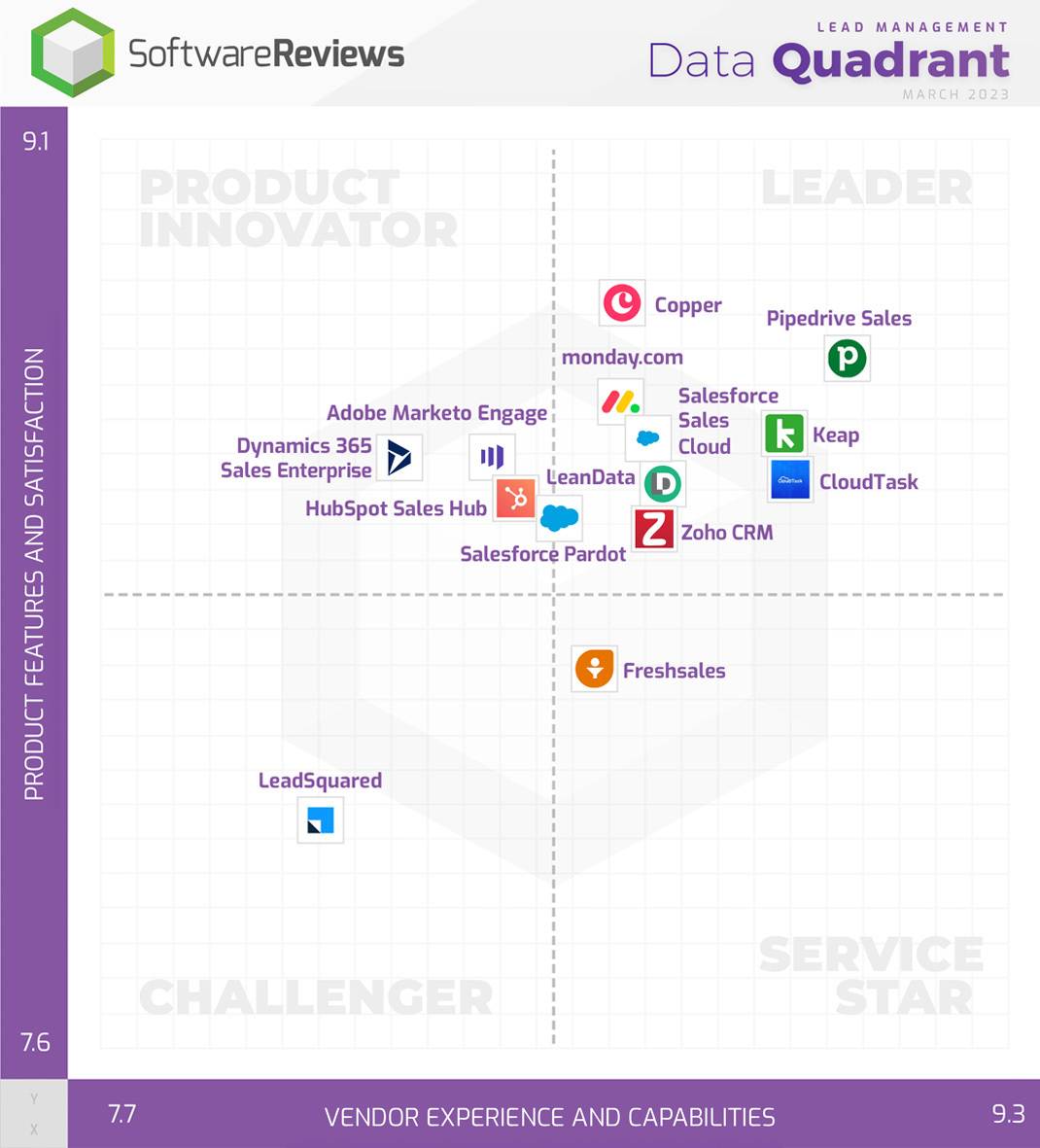
It has all of the critical features you need from a high-performing CRM system, including:
It also offers marketing automation software Campaigns as an add-on (priced per company rather than per user).
You could use it to automate campaigns like welcome emails for new subscribers, for example.
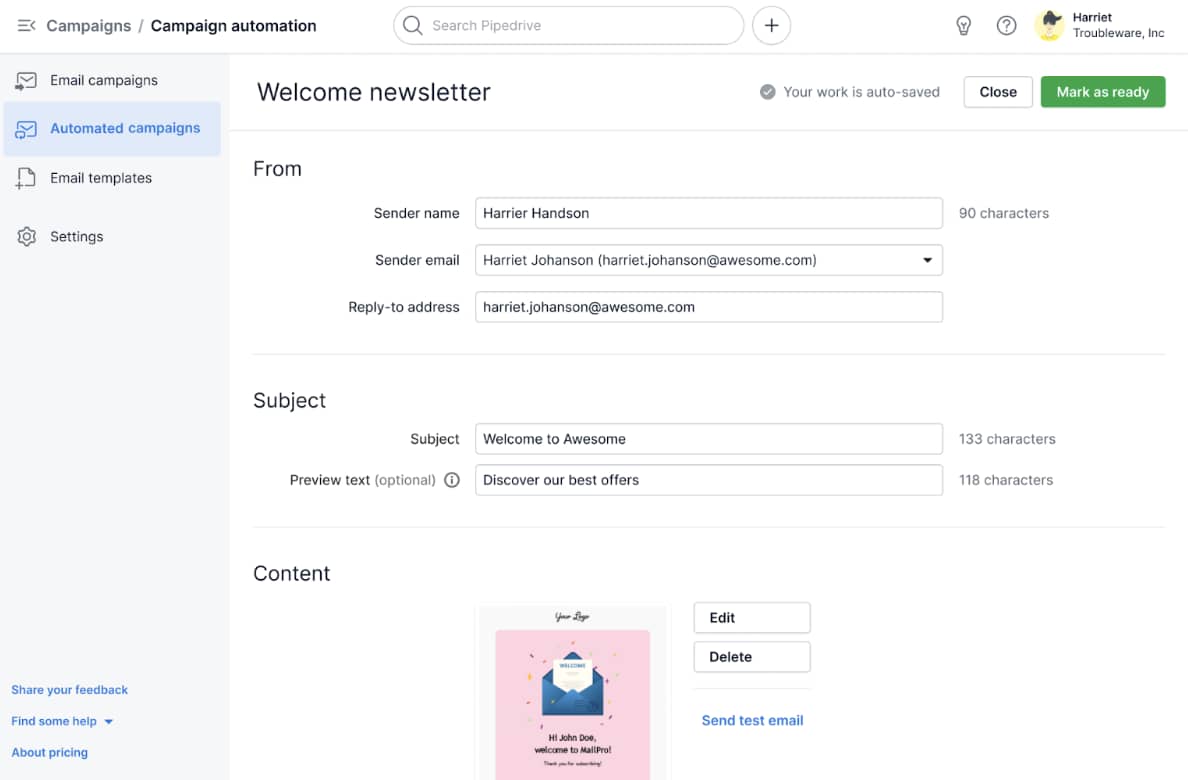
As you’re working directly within your CRM, there’s plenty of rich customer data to pull from. You can even use these insights to segment your email list into groups and send more highly personalized messages.
For instance, you could target customers who have purchased in the last six months and send them a special offer for a complementary product.
Campaigns’ drag-and-drop builder makes it easy to create and personalize outreach. You can use its customizable ready-made templates or build unique layouts from scratch.
Here’s what the drag-and-drop editor looks like.
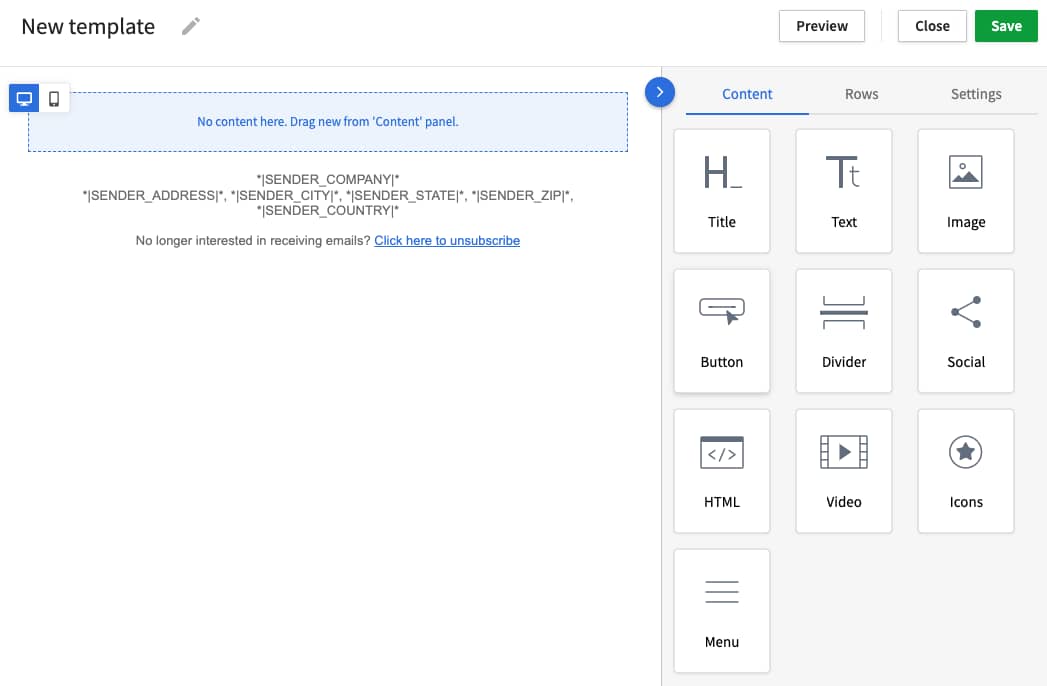
You can also use Pipedrive’s AI email writer and summarization tools (if you’re on the Professional plan or higher) to save time and reduce writer’s block.
If you want to add other third-party marketing automation tools (e.g., Dexatel or Zapier), you can search through our Marketplace of over 400 apps.
2. Clean both sets of data to avoid duplications
Before implementing your integration, review and clean your data to remove or merge duplicate entries.
Cleansing your data when combining tools ensures accuracy and prevents inefficiencies in marketing and sales activities.
Let’s say you have two profiles for the same customer. Without realizing it, you may regularly send the same communications twice. In addition to reducing customer engagement, you could appear unprofessional and lose people’s trust over time.
When you have multiple sales and marketing team members, you’re bound to overlap information and create duplicates. You can clear these up manually or use a CRM solution that does it for you.
For example, Pipedrive can automatically merge duplicate people and organizations.
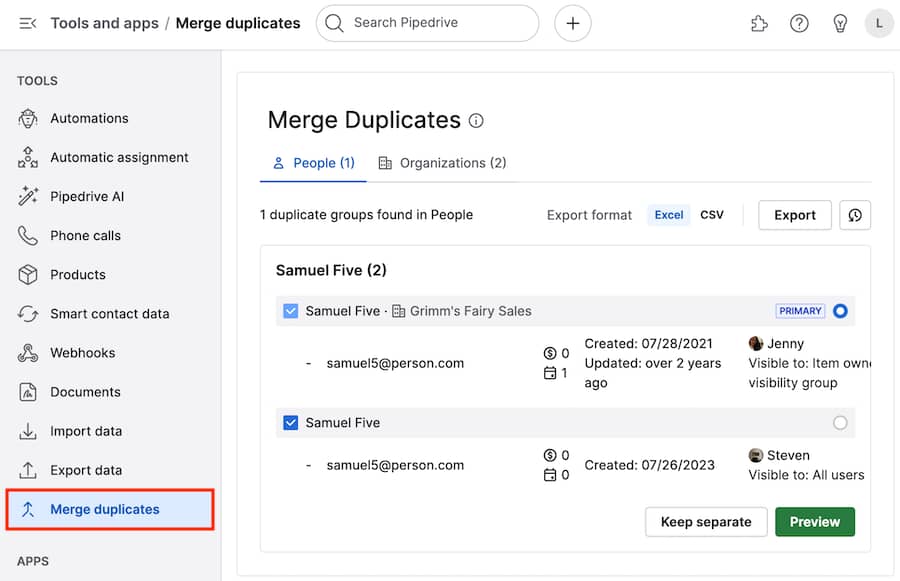
The platform can spot identical customer details in the system and combine or keep profiles separate.
You can use the same process when importing to merge or ignore duplicates.
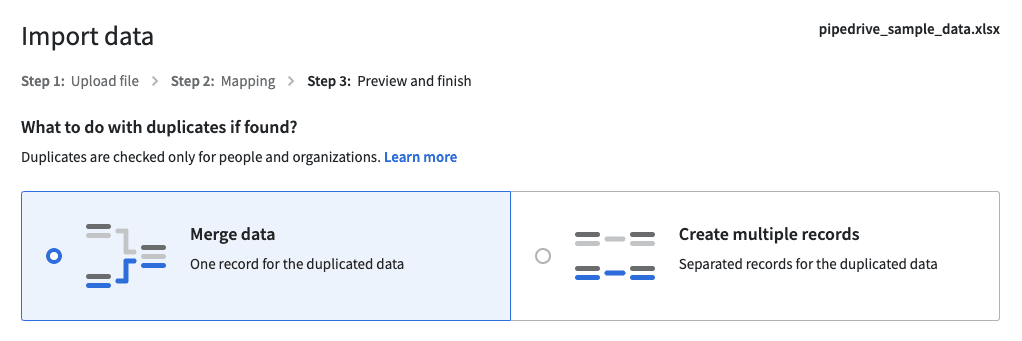
Keeping a clean contact list helps prevent redundant outreach and gives you more precise insights for accurate decision-making.
3. Align and train your sales and marketing teams
Before and after implementing your software, arrange joint meetings with sales and marketing so everyone is informed about the change.
It’s helpful to get teams on board from the start to understand why you’re making this decision and to share any thoughts.
You want to ensure everyone is committed to the change and will use the tools in the same way. Keeping open communication throughout can also help encourage buy-in.
For example, you may share with marketers that the new software will send targeted, relevant content based on recent interactions. If a customer downloads an e-book from your landing page, they’ll receive an automated email about that specific topic.
Salespeople can then suggest how to fine-tune these segments further. They could share the behaviors that likely indicate someone is ready to purchase (e.g., signing up for free sales demos).
Once the software is live, hold regular training sessions so team members understand how to use it and collaborate more efficiently on projects.
Sessions can include:
-
Walkthroughs of new features
-
Best practices for data entry
-
Role-specific tips to maximize efficiency
-
Strategies for personalizing customer communications
-
Troubleshooting common issues
-
Q&A sessions
Ongoing support with feedback loops can help address any issues promptly and encourage everyone to keep learning and improving.
4. Set measurable KPIs to determine success
Key performance indicators (KPIs) are metrics that act as clear, quantifiable goals. Determining yours and choosing a tool that tracks and measures them will help you assess your software’s performance.
If you’re turning leads into customers more quickly after implementation, that’s a positive sign. If the process slows, you need to figure out what’s causing friction.
Sifting through raw data to spot trends and patterns can take time you don’t have. Automating this process can help you visualize your data to make better, more timely decisions.
For example, here are some reports you can create within Pipedrive.
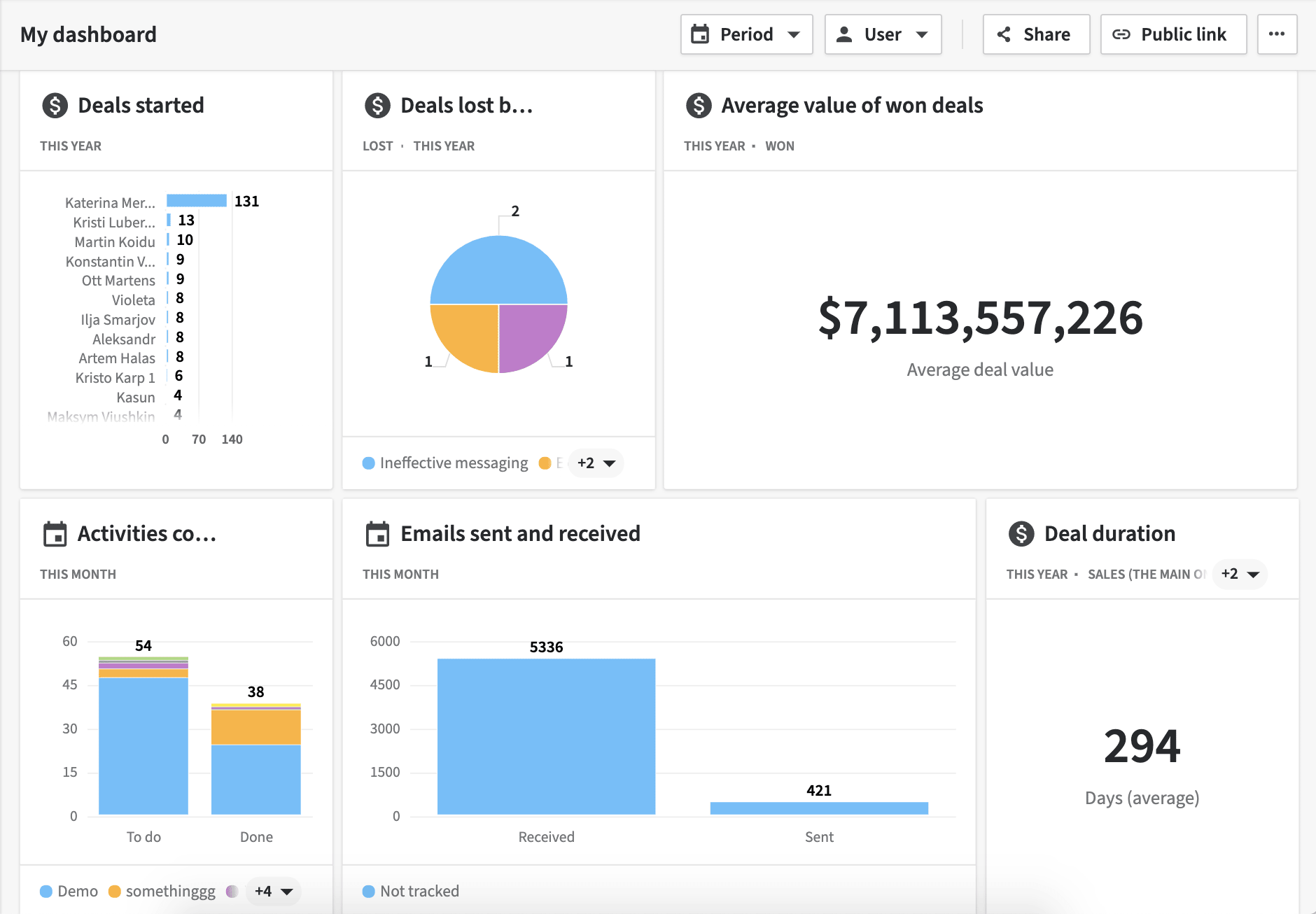
Choosing clear metrics and benchmarks (the numbers you start with) can help you evaluate your integration efforts’ effectiveness and identify areas for improvement.
You might look at KPIs like lead conversion rate and sales cycle length to see whether your integration is helping you convert customers faster.
Here are some of the KPIs you could track:
-
Lead conversion rate. The percentage of leads that turn into paying customers.
-
Customer acquisition cost (CAC). The total cost of acquiring a new customer, including marketing and sales expenses.
-
Sales cycle length. The average time it takes to convert a lead into a customer from initial contact to closing the deal.
-
Lead response time. How quickly leads are contacted after they show interest in your product, service or content.
-
Customer retention rate. The percentage of customers who continue to do business with you over a given period.
-
Pipeline velocity. The speed at which leads move through your sales pipeline.
-
Average deal size. The average value of closed deals.
Each of these KPIs indicates how successful your integration is at speeding up routine marketing tasks and enhancing outreach with rich customer data.
Recommended reading

15 email engagement metrics to know and how to improve them
CRM and marketing automation FAQs
Final thoughts
Using separate CRM and marketing automation tools is possible. However, an integrated platform can offer a smoother sales-and-marketing collaboration with more accurate, unified data.
To find the best software for your needs, research thoroughly and take advantage of free trials or plans to find one that fits your budget.
Start with Pipedrive’s 14-day free trial to test the platform’s powerful features today.
If Pipedrive is of interest and you'd like more information, please do make contact or take a look in more detail here.
Credit: Original article published here.
